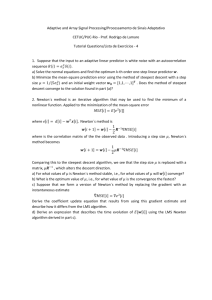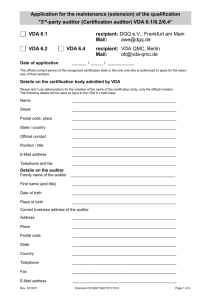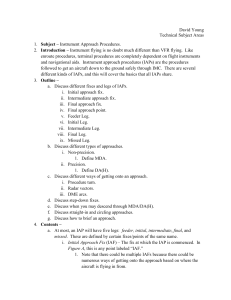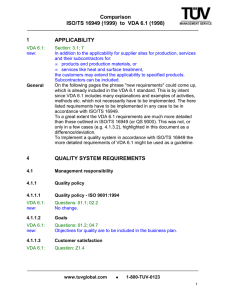VDA Policy - takeflightsandiego.com
advertisement
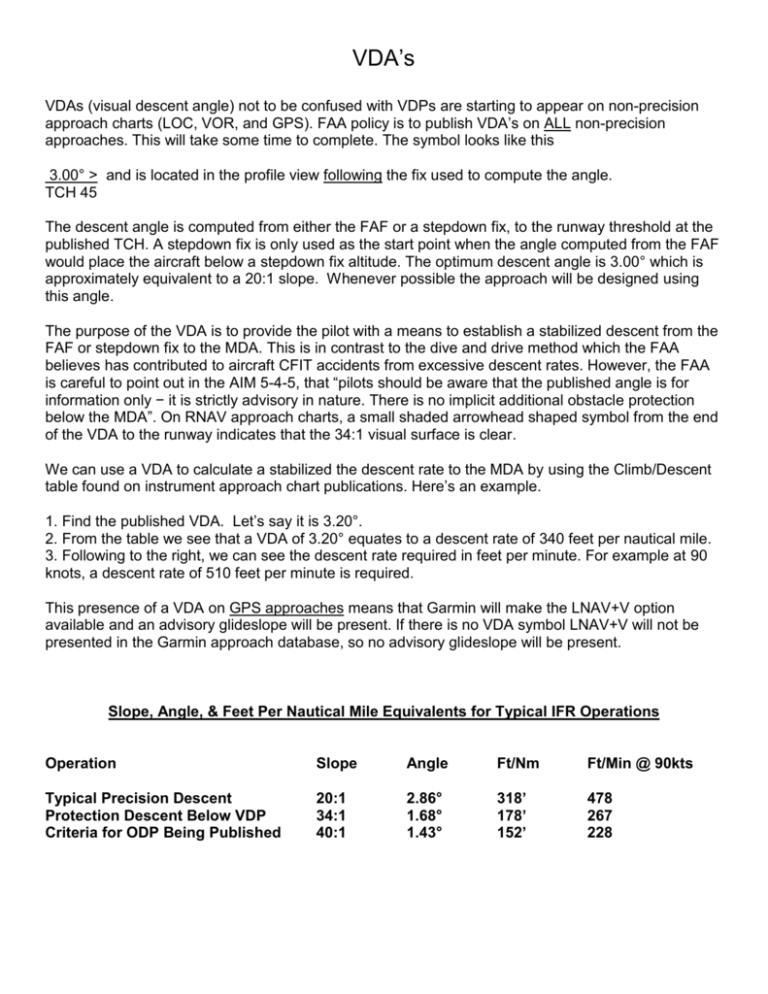
VDA’s VDAs (visual descent angle) not to be confused with VDPs are starting to appear on non-precision approach charts (LOC, VOR, and GPS). FAA policy is to publish VDA’s on ALL non-precision approaches. This will take some time to complete. The symbol looks like this 3.00° > and is located in the profile view following the fix used to compute the angle. TCH 45 The descent angle is computed from either the FAF or a stepdown fix, to the runway threshold at the published TCH. A stepdown fix is only used as the start point when the angle computed from the FAF would place the aircraft below a stepdown fix altitude. The optimum descent angle is 3.00° which is approximately equivalent to a 20:1 slope. Whenever possible the approach will be designed using this angle. The purpose of the VDA is to provide the pilot with a means to establish a stabilized descent from the FAF or stepdown fix to the MDA. This is in contrast to the dive and drive method which the FAA believes has contributed to aircraft CFIT accidents from excessive descent rates. However, the FAA is careful to point out in the AIM 5-4-5, that “pilots should be aware that the published angle is for information only − it is strictly advisory in nature. There is no implicit additional obstacle protection below the MDA”. On RNAV approach charts, a small shaded arrowhead shaped symbol from the end of the VDA to the runway indicates that the 34:1 visual surface is clear. We can use a VDA to calculate a stabilized the descent rate to the MDA by using the Climb/Descent table found on instrument approach chart publications. Here’s an example. 1. Find the published VDA. Let’s say it is 3.20°. 2. From the table we see that a VDA of 3.20° equates to a descent rate of 340 feet per nautical mile. 3. Following to the right, we can see the descent rate required in feet per minute. For example at 90 knots, a descent rate of 510 feet per minute is required. This presence of a VDA on GPS approaches means that Garmin will make the LNAV+V option available and an advisory glideslope will be present. If there is no VDA symbol LNAV+V will not be presented in the Garmin approach database, so no advisory glideslope will be present. Slope, Angle, & Feet Per Nautical Mile Equivalents for Typical IFR Operations Operation Slope Angle Ft/Nm Ft/Min @ 90kts Typical Precision Descent Protection Descent Below VDP Criteria for ODP Being Published 20:1 34:1 40:1 2.86° 1.68° 1.43° 318’ 178’ 152’ 478 267 228



